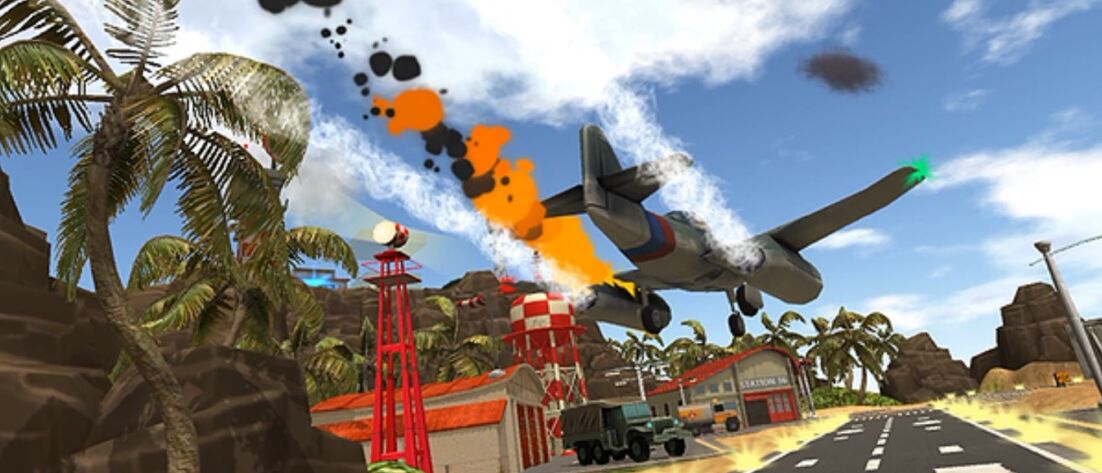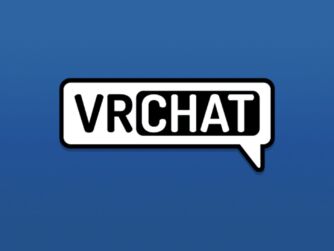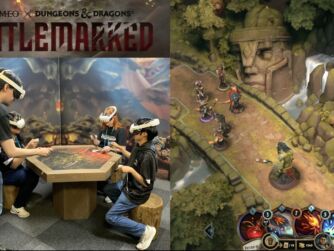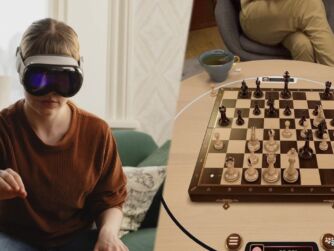 John Nagle is the CTO at Phaser Lock Interactive, who is developing a Vive game called Final Approach. The gameplay of Final Approach involves selecting miniature planes flying through the air and then drawing landing paths in 3D space with a 6DOF controller. It’s sort of an arcade style air traffic controller game where you’re an invisible giant helping planes and helicopters land and take off. But then you can shrink down to normal scale and help to put out fires and clear the sea gulls from the runway.
John Nagle is the CTO at Phaser Lock Interactive, who is developing a Vive game called Final Approach. The gameplay of Final Approach involves selecting miniature planes flying through the air and then drawing landing paths in 3D space with a 6DOF controller. It’s sort of an arcade style air traffic controller game where you’re an invisible giant helping planes and helicopters land and take off. But then you can shrink down to normal scale and help to put out fires and clear the sea gulls from the runway.
I had a chance to play Final Approach at PAX Prime, and it was a fun and entertaining experience to draw the flight paths and to switch between miniaturized and more 1:1 scale. I only got to step through the initial demo scenes, but I could imagine how having to juggle between all of the tasks and switching scales could make for longer gaming sessions. They were also really inspired by the painting mechanics of Tilt Brush, and wanted to turn that path-drawing motion into a full game.
John talks about the process of developing for the Vive, how they’ve converted a room-scale experience into also working as a sit-down experience, some of the lessons learned, his first experience within Job Simulator, as well as what some of the reactions to the game have been so far. John says that developing for the Vive has been one of the most rewarding development experiences he’s ever had, and they’re both really excited to be working on a Vive launch title and to be in early in this latest wave of VR development.
Become a Patron! Support The Voices of VR Podcast Patreon
Theme music: “Fatality” by Tigoolio
Subscribe to the Voices of VR podcast.
Rough Transcript
[00:00:05.412] Kent Bye: The Voices of VR Podcast.
[00:00:11.992] John Nagle: My name is John Nagel. I'm the CTO of Phaser Lock Interactive. We're working on a game called Final Approach. It's sort of a virtual reality air traffic control game. I won't call it a simulation. It's more of an arcade game. It's basically airport management, but we take it to the next level. Obviously, in the room scale, it gives us a lot of opportunity to do a lot of gameplay that people haven't really experienced before in this kind of game. So it's a pretty unique experience.
[00:00:36.775] Kent Bye: Yeah, so maybe you could tell me a bit about, like, what is the gameplay mechanic and what's the goal that people have when they go into this experience?
[00:00:43.798] John Nagle: Sure. Well, the core gameplay, what we call core gameplay, is when you first start the game, you see an island with an airport on it. And the island is about probably the size of your dinner table. And so you see these little two- or three-inch-wide airplanes and helicopters flying around. And you take your controller and you draw paths for them through the air to land on their appropriate runways and landing pads. And then, of course, you're managing ground traffic as well, because once they land, they taxi around, they get fuel and things like that. And then we have things such as storm clouds. For example, if an airplane flies under a storm cloud, it may get struck by lightning and catch on fire. And so when the plane lands, It'll taxi around and come to a certain spot on the taxiway where the player will then have to what we call zoom down. You click a zoom point with your trigger and you shrink down and now you're on the airport looking up at a full-size airplane in front of you on fire and in your hand now is a water hose which you then have to use to put out the fire. And so we have lots of little experiences like that baked into the game such that you can zoom in and have lots of little diverse gameplay experiences and then zoom back out and still get into the airport management aspect of the game.
[00:01:58.790] Kent Bye: Yeah, it sounds like there's a couple of things in there in terms of what they might call near-field VR, or the sweet spot of VR, where you're dealing with miniaturized things in your environment, but also being able to zoom down to go from that being a giant down to that normal scale, it sounds like. So what have you found in terms of people's experiences when they are actually playing the game?
[00:02:20.067] John Nagle: Well, I mean, invariably, the first experience that people have is, most people have not tried the Vive, obviously, yet. So they spend the first minute or two actually getting acclimated to that environment, just being able to walk around, realizing that they can physically walk through the island. They're not going to kill the villagers or anything like that. It's going to be OK. And then once they get comfortable with that, and then we hit them with the zoom point, and then they're completely blown away. One person we had playing it two days ago, When he took the headset off, he literally could not speak. He's the first person we've actually had play it who was literally speechless after the experience. It was pretty amazing.
[00:02:55.327] Kent Bye: And so talk a bit about developing for a room scale type of experience and what you've learned from doing that.
[00:03:01.515] John Nagle: It's been a very eye-opening experience, actually. It's probably been the most rewarding development I've done in my career so far. Well, for sure it has. You know, typically as a game developer, starting as a game developer back in the Acclaim days, back in the 90s, you're typically used to sitting at your desk and trying things out and something breaks and then you fix it and you keep playing it, but you're always sitting at your desk. Whereas when we're debugging and we're working on code, We're writing code and then we stand up and we go back and put our headset on and we pick up the controllers and we're playing the game. And then we hit a break point and then the screen goes blank and we have to go sit down and figure out the code. But it's a very active development experience. You certainly get your exercise when you're developing for the Vive.
[00:03:43.053] Kent Bye: Yeah, that's interesting when you say that because I wonder how long someone could play a game like this before they just get completely exhausted.
[00:03:50.547] John Nagle: Well, and we've taken that into consideration, too, because we realize most people aren't going to play. If we have 6 to 10 hours of gameplay or whatever, most people aren't going to want to, even if they get fully immersed in it and addicted to it or compelled by it, I should say, we're not going to expect them to stay in that environment for 6 to 10 hours standing and walking around. So we are building in to the game lots of experiences where you can sit down and enjoy the game from a sitting position.
[00:04:16.656] Kent Bye: So if I understand it correctly, you're kind of drawing with almost like a pen through the air and kind of just drawing the flight paths. And what about that gameplay makes it interesting or fun or compelling?
[00:04:28.003] John Nagle: Well, that's the core gameplay mechanic. So yes, there are planes flying through the air and you path them and so forth like that. But there's additional gameplay that involves once the path is created, for example, putting out fires and doing helicopter rescues and things of those nature. that actually do extend the gameplay experience far, far beyond the standard pathing that you would expect to not be a very compelling experience for hours on end. It's novel at the beginning, certainly, but it has to go deeper than that. We recognize that to make a more compelling game that you have to have deeper gameplay than just pathing the airplanes and landing them, taking them off. That would get pretty repetitive. So we build on that and we add these subtle nuances, the zoom point experiences, putting out the fires, scaring away birds, lots of little gameplay like that that happens at what we call toy scale, which is when you're zoomed down to the surface. So that keeps it nice and diverse.
[00:05:24.339] Kent Bye: What other type of challenges or roadblocks did you face when you're developing for the Vive?
[00:05:30.306] John Nagle: Well, I think it's new hardware, so we've had some driver issues, and Valve and HTC have been extremely helpful in that regard. The drivers have made great strides over the last few months. The SteamVR software and the chaperone has come a long way since we started this project, but I have to tip my hats to those guys. They've done a really, really good job getting the hardware together and getting it to a point where we can be productive as developers and actually see the experience in a way that we can feel comfortable is going to be in parity with what the end user is going to experience when they purchase the game.
[00:06:05.747] Kent Bye: And maybe you could tell me a bit about some of your first Vive experiences and what that was like to kind of run through the initial demos and what really stuck out for you.
[00:06:13.147] John Nagle: I would say, yeah, for sure. Alex Schwartz is a good friend of ours and he gave us our first introduction to the Vive and so obviously Job Simulator was our first experience. Hats off to him for creating such a really compelling room-scale experience. It gives you the ability to actually interact with your environment in ways that VR games have never done before. And so that was a big inspiration for us. And, you know, really, I would say coming into the experience as virgins in the sense that we had never experienced room-scale VR, it fired off all kinds of neurons in our brains. And we spent that very same evening, we spent probably three or four hours closing down a pub, talking about ideas and things that we could do with room-scale VR. And that, you know, literally we had to get involved with the Vive.
[00:07:01.548] Kent Bye: An experience like this is kind of going all in with the room scale and having, you know, 3D UI, you know, six DOF controller interactions. Like, I don't imagine something like this could really work without being able to move around a space and to using, like, an Xbox 360 controller. So what is your approach in terms of creating a VR experience? And as VR developers, are there ways that you've thought about trying to translate this experience into a sit-down experience or something that's on mobile?
[00:07:28.974] John Nagle: Well, actually, we can do this. We can play this game in a sitting position if we scale the world down. And we have a working demo of this already. So it's definitely something that we've thought about. And we know other devices that we'll be shipping this game on will have that kind of experience instead of the room scale experience. So yeah, we're certainly cognizant of that need to be able to do that from a sitting experience for sure.
[00:07:55.348] Kent Bye: Well, so then do you have plans for leap motion integration? I guess the thing about drawing a path through space kind of implies that you would need something like a controller that would be able to track.
[00:08:06.105] John Nagle: So yeah, we have to have a hand-tracked controller, for this game at least. I mean, we think that VR in general, you really need a hand-tracked controller. I mean, that's just our personal feeling on the subject. To have a more of a traditional, say, standard gamepad controller and interact with VR is, I think it's counterintuitive. I think it doesn't feel natural. And the experiences that we've seen so far from people walking into our office and trying the game for the first time, even if they're not gamers, they take those controllers and they immediately know how to use those controllers. I mean, it's very, very natural extension of the way our brain thinks already. So there's really a very low learning curve if your hands are tracked in space versus if you're having to say press button A, button B, doing this kind of thing and trying to make this connection between what I'm doing on this game pad versus what's happening in the world. I think that's not something that non-gamers can easily acclimate to.
[00:08:58.195] Kent Bye: Yeah, I just had my first Vive experience this morning and with the controller I noticed that there's like a trigger button, there's like side buttons, there's the thumb pad that you're moving around and you can press it and then there's a couple other buttons and so from the actual controls on the Vive, which ones are you using and what have you found in terms of what is sort of the most intuitive to use?
[00:09:19.964] John Nagle: Sure, I think without a question the trigger is the most intuitive to use and Probably our game is not unique in that regard. I think most of the experiences that we've seen so far rely heavily on the trigger. The combination touchpad D pad is really nice input device. We're making good use of that and some gameplay we're working on right now. So that's a really, really good feature on the controllers. I haven't made much use of the side buttons yet, so we'll see what we do with those. But certainly the trigger and the touchpad are the two most compelling input components on the controllers.
[00:09:52.421] Kent Bye: what's next for you and your plans of getting ready for the launch of this game.
[00:09:57.217] John Nagle: Right now we're just focused on building the best possible experience we can for the launch of the Vive. And we're going to be there at launch. This is going to be a deeper game than people will initially give it credit for, I think. And we have the team working back in Austin right now, working really hard to push the boundaries of what we can do with the concept and take it in directions that I think people are going to be very impressed with the final product. It's really looking great, and we're really pleased with how the development is progressing right now.
[00:10:25.324] Kent Bye: Great. And finally, I'm wondering what you think is the ultimate potential for virtual reality and what it might be able to enable.
[00:10:32.868] John Nagle: Well, I've done a lot of thinking about that. And I think people, once they've spent a lot of time in the virtual reality environment, I think it's going to have some psychological impacts that we can't even imagine. And I think not all of them are necessarily negative. I think it's going to expand our creativity. I think it's going to expand our enlightenment. I think some really, really good things are going to come out of There's a book called Iconoclast that chronicles how really successful people, I guess the upshot of it is really successful people have varied experiences day in and day out. They don't have sort of like they get up, they have their coffee, they go to work, and they have this sort of stayed experience. Iconoclasts vary their experiences wildly from day to day, and I think With VR, we all have that capability now where we can go and do all of these incredible experiences that we can never ever do in real life. And we can do this every day now. It can become part of our day-to-day experience. In fact, there was a video, I'm sure you probably saw it, of the gentleman playing the Apollo 11 experience and was in tears because he was like, I'll never get to do this in real life. I've wanted to do this since I was a kid. and had such an emotional impact on him. And I think that's what we can all experience in the future day to day. I mean, once we get up to higher resolution screens and start losing some of the wiring and some of that kind of stuff over the next few years, it's going to get really, really exciting about what's possible in VR.
[00:11:59.039] Kent Bye: And is there anything else that's left unsaid that you'd like to say?
[00:12:02.524] John Nagle: Just really excited for the future and we wanted to be here at the start of it and we want to ride it out and make this, this is what we want to do with our lives and really create content that people will enjoy and that we enjoy creating. So that's what we want to wake up every morning and do. Awesome.
[00:12:18.798] Kent Bye: Well, thank you. Thank you so much. And thank you for listening. If you'd like to support the Voices of VR podcast, then please consider becoming a patron at patreon.com slash Voices of VR.




